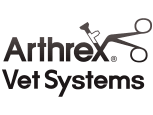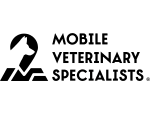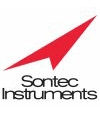Equine arthroscopy is a minimally invasive surgical procedure used to diagnose and treat a variety of joint-related conditions in horses.
This procedure is primarily performed under general anesthesia. Equine arthroscopy involves the use of a small, specialized camera called an arthroscope to visualize and access the interior of a horse’s joint without the need for extensive surgical incisions. By inserting the arthroscope through tiny incisions, veterinarians can examine the internal joint structures, diagnose abnormalities, and perform minimally invasive surgical procedures to address various joint-related conditions. The minimally invasive nature of this procedure reduces the risk of complications associated with wound healing and speeds up recovery compared to open techniques.
Arthroscopic surgery may be recommended for horses presenting a range of joint-related issues. Clinical signs leading towards arthroscopic surgery primarily involve lameness and joint effusion (fluid filling causing enlargement of a joint). Your veterinarian will perform an exam and diagnostic imaging before determining that arthroscopy is indicated for your horse.
Prior to arthroscopy, your veterinarian will conduct a thorough physical examination, lameness evaluation, and diagnostic imaging (such as radiography or ultrasound) to assess the affected joint, identify potential abnormalities, and determine the need for arthroscopic surgery. Pre-operative bloodwork is typically recommended to ensure the horse is an appropriate candidate for anesthesia and surgery.
Common clinical conditions that are assessed and treated with arthroscopy include: osteochondritis dissecans (OCD), cartilage lesions, synovitis, and intra-articular injuries such as bone fragments and fractures of the joint. Joint wounds and infections often receive arthroscopic assessment and lavage as a part of treatment. Arthroscopy also serves as a valuable diagnostic tool for evaluating joint abnormalities through direct visualization of cartilage and intra-articular structures. This information can guide both intraoperative and post-operative treatment and help determine prognosis.
The arthroscopic procedure typically consists of the following steps:
Anesthesia and Surgical Preparation: Arthroscopy is typically performed under general anesthesia to ensure the horse remains immobile and pain-free throughout the procedure. After administering anesthesia, the joint is clipped and aseptically prepared, and the affected limb is carefully positioned to facilitate optimal arthroscopic access to the joint of interest.
Arthroscopic Surgery: Small incisions, known as portals, are made in the skin overlying the joint to be examined or treated. The arthroscopic camera provides real-time visualization of the joint structures on a monitor. The surgeon systematically evaluates the joint synovial lining, cartilage, and tendons and ligaments for abnormalities. Based on the findings, additional portals may be created to allow access for specialized instruments for debridement, fragment removal and joint lavage. The skin incisions are closed with sutures, the joint is bandaged, and the horse is recovered from anesthesia.
Post-operative Care and Recovery:
Following arthroscopy, the horse is carefully monitored, and appropriate post-operative care measures are implemented to minimize discomfort, reduce swelling, and support healing. Postoperative care by owners and trainers is key to optimal recovery, and an individualized care plan is created depending on the specific procedure performed and the horse’s individual needs. In all cases, incision care is key to reducing the risk of joint infection and often includes bandaging until suture removal. The horse will have a period of restricted activity followed by gradual reintroduction to exercise and may need medications during the early postoperative period (anti-inflammatories and/or antibiotics). Additional joint therapies are sometimes recommended for continued care, depending on the individual horse’s needs.
Considerations and Potential Risks:
While equine arthroscopy is generally considered safe and effective, it is not without potential risks. General anesthesia carries inherent risks, and while uncommon, intraoperative complications can occur, including instrument breakage, iatrogenic cartilage damage, or unintended soft tissue trauma. Experienced veterinary surgeons, meticulous surgical technique, and intra-operative monitoring are key to minimizing the risk of adverse events. Infection is also an uncommon but possible complication, and strict aseptic technique and diligent postoperative wound care are essential for minimizing the risk of surgical site infections. Prior to arthroscopy, your veterinarian will conduct a thorough preanesthetic evaluation and discuss anesthesia and surgery-related risks based on your horse’s individual health status and medical history.
Benefits of Arthroscopy:
Equine arthroscopy offers several advantages for both horses and their owners. The minimally invasive nature of the procedure minimizes tissue trauma, offering shorter recovery times than open-joint surgery (arthrotomy) and a faster return to normal activity for the horse. The procedure allows for diagnostic precision and therapeutic versatility and can sometimes even be performed on an outpatient basis, meaning the horse may be able to return home the same day as the procedure.













